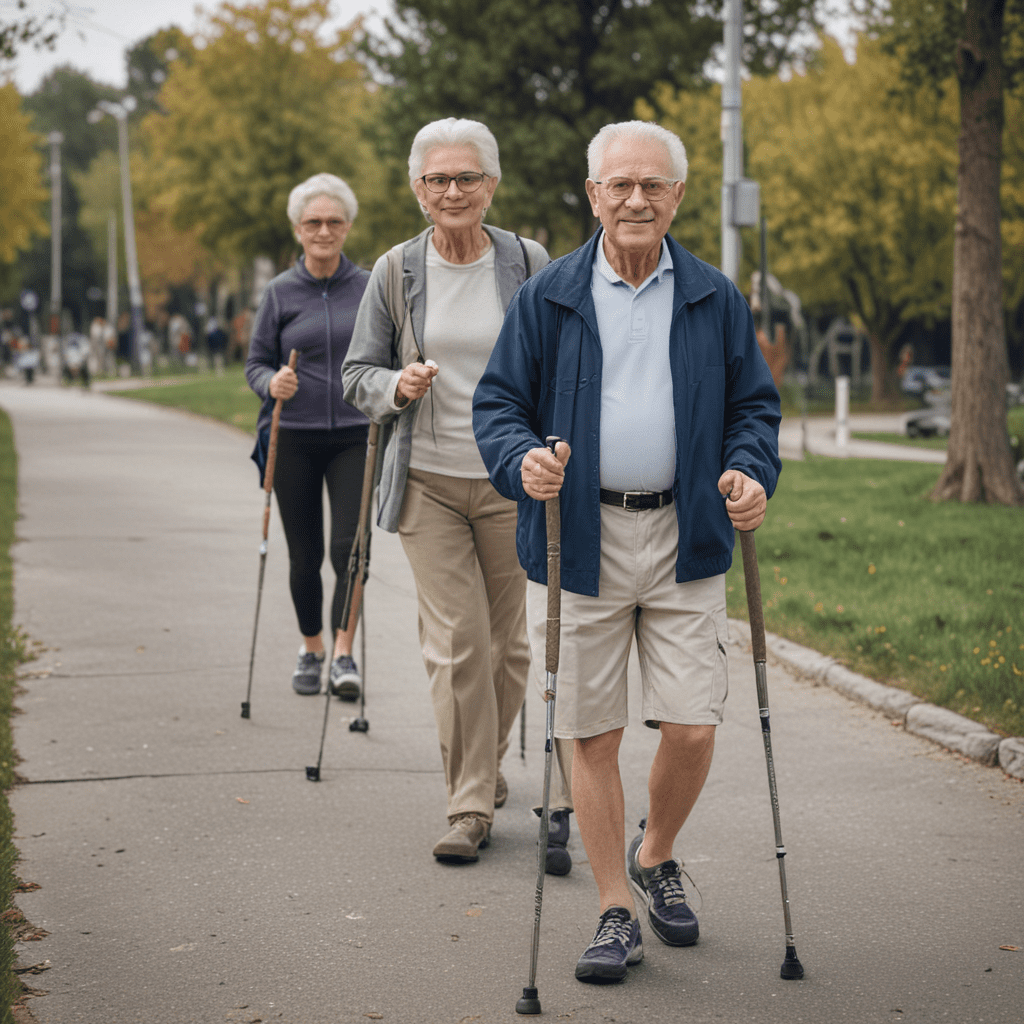
1. Introduction: The Importance of Walking Poles for Seniors
As we grow older, maintaining our mobility and independence is crucial for preserving our quality of life. One effective aid that can significantly enhance the mobility of senior individuals is walking poles. These poles provide stability, support, and can have a positive impact on overall well-being.
2. Benefits of Using Walking Poles: Enhancing Stability and Support
Walking poles offer numerous benefits for seniors. For those with limited mobility, the poles provide additional support and stability, reducing the risk of falls and increasing confidence during walks. The poles act as an extension of the arms, allowing for a wider base of support and distributing weight more effectively.
3. Choosing the Right Poles: Factors to Consider for Seniors
When selecting the right walking poles, there are a few key factors that seniors should consider. The height of the poles should be adjusted to the individual's height, with the poles reaching the hips when standing upright. Non-adjustable poles should be chosen carefully to ensure a comfortable and supportive fit. Material composition is another consideration, with aluminum or carbon fiber often preferred for their lightweight durability.
4. Types of Walking Poles: Trekking, Nordic, and Standard Poles
There are three primary types of walking poles: trekking poles, nordic poles, and standard poles. Trekking poles are designed for uneven terrain and often feature shock-absorbing mechanisms. Nordic poles are intended for cross-country skiing, with longer poles and wider straps for propelling forward. Standard poles are typically shorter and have a simple design, suitable for everyday use on flat surfaces. The choice of pole type depends on the individual's specific needs and preferences.
5. Proper Technique for Using Walking Poles: Optimizing Balance
To maximize the effectiveness of walking poles, proper technique is essential. When walking on flat surfaces, the poles are used alternately, placing them forward and slightly to the side of the opposite foot. The arms should be kept straight, with the poles angled slightly outward to form a triangle with the feet. This technique promotes balance, enhances posture, and engages upper body muscles.
6. Safety Considerations: Precautions for Seniors Using Walking Poles
While walking poles are generally safe to use, there are certain safety considerations that seniors should keep in mind. It is important to avoid using poles on slippery or uneven surfaces, as this can increase the risk of falls. Additionally, poles should be inspected regularly for any signs of damage or wear, and should be replaced if necessary.
7. Impact on Gait and Posture: How Poles Improve Senior Mobility
Walking poles can have a significant impact on gait and posture in seniors. By providing additional support, poles help to reduce the strain on joints and muscles, improving balance and stability. This can lead to a more efficient and comfortable walking gait, as well as improved posture.
8. Psychological Benefits: Confidence and Empowerment
Beyond their physical benefits, walking poles can also have a positive psychological impact on seniors. The increased stability and support they provide can boost confidence and empower individuals to remain active and independent. Walking poles can also provide a sense of companionship, especially for seniors who may use them during solitary walks.
9. Potential Limitations and Drawbacks: Understanding the Cons
While walking poles offer numerous advantages, there are a few potential limitations to consider. For some seniors, poles may be cumbersome or difficult to manage, especially in crowded or confined spaces. Additionally, using poles may require some acclimation and practice to master proper technique.
10. Conclusion: The Value of Walking Poles for Senior Well-being and Mobility
Walking poles can be a valuable tool for enhancing the mobility, well-being, and independence of seniors. By providing stability, support, and psychological benefits, poles can help seniors remain active, engaged, and confident in their daily lives. By carefully considering the factors discussed in this article, seniors can find the right walking poles to meet their individual needs and reap the many benefits they offer.
FAQs
1. What are the different types of walking poles available?
There are three primary types of walking poles: trekking poles, nordic poles, and standard poles. Trekking poles are designed for uneven terrain and often feature shock-absorbing mechanisms. Nordic poles are intended for cross-country skiing, with longer poles and wider straps for propelling forward. Standard poles are typically shorter and have a simple design, suitable for everyday use on flat surfaces.
2. How do I choose the right walking poles for my needs?
When selecting walking poles, consider your height, intended use, and level of mobility. For seniors, non-adjustable poles should be chosen carefully to ensure a comfortable and supportive fit. Aluminum or carbon fiber poles are often preferred for their lightweight durability.
3. Is it difficult to learn how to use walking poles correctly?
Learning to use walking poles properly requires some practice, but it is generally not difficult. The key is to keep your arms straight, angle the poles slightly outward, and use them alternately to provide support and balance.
4. Are there any safety considerations I should be aware of when using walking poles?
Avoid using poles on slippery or uneven surfaces, as this can increase the risk of falls. Additionally, inspect poles regularly for damage and replace them if necessary.


